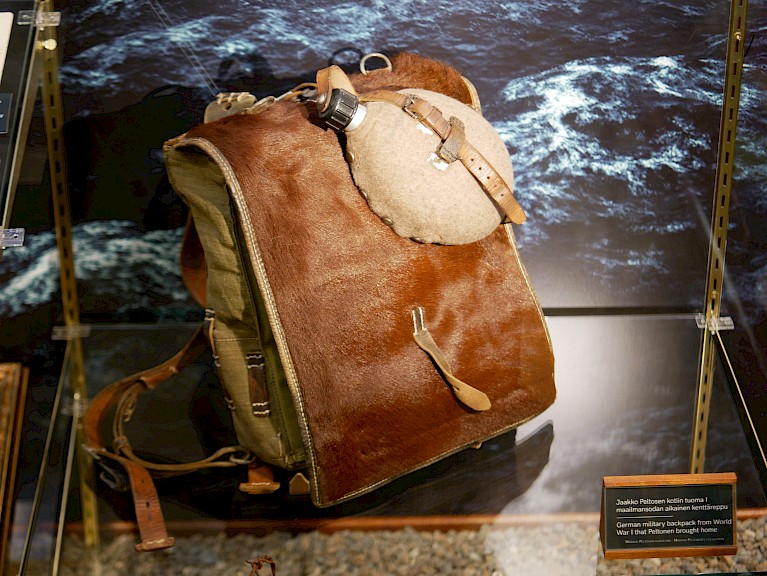
A single seafarer’s fate in war was a matter of chance
Seafarers and ships were pawns in the game between Germany and Finland, which culminated in cancellation of the relationships in early September 1944. Germany was quick to detain the Finnish ships and their crews in German-controlled ports. When the Finnish Merchant Shipping Control and Regulation Committee reacted by keeping the Nazi German vessels in the Finnish ports and denying them pilotage, the Germans withdraw for a moment in order not to jeopardise the exit of their army from Finnish territory.
During this “moment of consent” between Finland and Germany, Finland made an effort to help Germany leave by the given time limit, September 15th. The government authorized the Committee on September 7th 1944 to time-charter 14 vessels for the evacuation of Wehrmacht war materiel. The Finnish authorities must have recognized the risks involved to Finnish ships and seafarers. They decided to trust Germany’s promise to let the time-chartered vessels return to Finland, although the Germans had detained Finnish ships just a few days earlier.
German attack to Suursaari island on September 15th sealed the final breaking off of the relations and the fate of the Finnish seafarers. The seafarers were interned in Nazi German camps; the location of their ship at the time of detention defined the camp they were transported to.
Those on board Finnish ships in the Kiel Canal were held in news blackout to the very last
Jaakko Peltonen had signed on SS Corona; the entire crew was arrested in the Kiel Canal. The Corona had arrived in Bremen in early September already. It could only unload on September 12th, after which the Germans detained the ship for one more day. The Corona was finally allowed to start its voyage home without cargo, through the Kiel Canal.
However, the voyage was interrupted near Holtenau on September 15th when a German lieutenant with seven sentries came on board. The lieutenant declared that the Corona had to stop due to the threat of mines. The sentries stayed on board, and the crew was not allowed to use the radio. The Master only could go on shore, accompanied by a sentry. The crew could not leave the Corona even during an air raid warning. The German lieutenant promised several times that the ship could sail soon, but it took ten more days before something happened on September 25th.
German soldiers entered the ship, telling the crew to disembark. The Corona, along with other vessels halted in the Kiel Canal, was confiscated by Germany. The crews were taken to navy barracks in Kiel. The seafarers were asked whether they consent to join the German army, to serve in German military or merchant navy, lest they be interned.
Those who chose internment were taken to Brauner Berg camp near Friedrichsort on October 5th. The Germans wanted labour force. As Nazi Germany was collapsing, the need of industrial labour force was immense. The seafarers were placed in factories where they manufactured torpedoes. Many of them were forced to work specifically in war supply production, in contradiction to the Hague Convention of 1907, which concerned the treatment of prisoners of war in land warfare: As prisoners of war, the seafarers could be obliged to work, but not in war-related industries. About twenty Finns refused to manufacture torpedoes. They were sentenced to forced labour under Organisation Todt in Duisburg, where the discipline was considerably harder and violence more prevalent than in Brauner Berg.
Physical and mental violence in the camps
Jaakko Peltonen described his horrendous experiences in the Brauner Berg camp. Prisoners were beaten, and there were daily hangings of Polish and Italian prisoners at dawn. The prisoners also experienced hunger. Together with a few others, Jaakko escaped to find food, but they were caught. During the interrogations, he was shown pictures of ample servings of food. When he returned home in the autumn of 1945, he weighed 35 kg. According to Markus Peltonen, the German government offered Jaakko treatment in a German tuberculosis sanatorium in the 1960’s, as he had a respiratory disease. Jaakko refused categorically. He never wanted to return “anywhere in that direction”.
The research on the internments of Finnish seafarers indicates that they were treated less brutally than many other prisoners. They did suffer coldness and inhumane conditions, forced labour, diseases, hunger and violence, but not on the scale that the Soviet and Jewish prisoners did. Their more cautious treatment was probably partly due to the aid supplied by Swedish consuls and the Seamen’s Mission. The seafarers were perhaps considered to be outsiders in the war; they had neither part nor lot in what happened to the relations between Finland and Nazi Germany toward the end of the war.
The seafarers were taken to camps that differed from each other to some extent. Many studies name Pölitz, a sub-camp of Stutthoff, where those interned in Norway were taken. It was considered more wretched and perilous than for instance Brauner Berg. It seems that suffering can also be relative.